- Administrator
- Albums and Singles
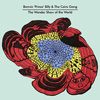 The pairing of Will Oldham and Emmett Kelly is not a new one. Kelly, as well as releasing music under the pseudonym The Cairo Gang, has been an active member of Oldham’s creative stable for a few years both on record and in his live band. Here, Kelly moves from his more background role into the spotlight as he provides the bulk of the music for this album much like Matt Sweeney’s contribution to Superwolf. Like that album, The Wonder Show of the World sits awkwardly next to Oldham’s other works; both belonging and standing apart at the same time.
The pairing of Will Oldham and Emmett Kelly is not a new one. Kelly, as well as releasing music under the pseudonym The Cairo Gang, has been an active member of Oldham’s creative stable for a few years both on record and in his live band. Here, Kelly moves from his more background role into the spotlight as he provides the bulk of the music for this album much like Matt Sweeney’s contribution to Superwolf. Like that album, The Wonder Show of the World sits awkwardly next to Oldham’s other works; both belonging and standing apart at the same time.
Musically, this album unexpectedly sounds like a mix of the gentle guitar of The Cairo Gang’s Twyxt Wyrd LP and Oldham’s recent studio output. The instrumentation is mostly restricted to guitar, bass and percussion which allow for Oldham and Kelly’s vocal harmonies to have the space they need. "Teach Me to Bear You" revolves around an alluring electric guitar refrain; Oldham’s main vocal shadowed by Kelly’s ghostly voice which reverberates from some haunted room out back. To cap it off, a guitar solo that sounds like something Neil Young would throw into a CSNY song plays the piece out wonderfully.
There is a Latin-influenced streak running through The Wonder Show of the World, particularly the percussion and guitar flourishes on "The Sounds Are Always Begging" and "That’s What Our Love Is." Both songs again explore that '70s CSNY-style rock vibe alluded to earlier, although without the artistically crippling effect of large amounts of cocaine destroying the songs. Plus I cannot imagine a band like CSNY or The Eagles coming up with a (lyrical) line like "the smell of your box on my moustache." Even other modern bands that are exploring similar territory like Fleet Foxes or Bon Ivor lack that edge that Oldham brings to his lyrics.
The limited edition of the album also includes a 7" single with two songs not on the main album. Both songs fit with the mood of the main album and it is a pity that they were not included as part of The Wonder Show of the World (in fact, I would prefer them to a couple of the songs that did make it on to the main album). "Midday" recalls some of the lighter moods explored on Ease on Down the Road or Master and Everyone, a charming song centred on the joy of lovemaking throughout the daylight hours. The flip side of the single, both literally and figuratively, swaps the ecstasy for defeat. "You Win" is one of those classic Oldham songs, beautiful finger-picked guitar carrying the sombre vocals: "O darling I’ll yield and sing softly: you win."
Oldham tends to dominate anything he appears on, not ever sounding like it is an ego problem but more that his strong character shines brighter than all but the most luminescent talents. There are a number of songs here that could have been on Beware but the best ones are those where Kelly’s influence comes through strongest. These are the ones I will keep coming back to The Wonder Show of the World for, both artists equally radiant in their own creativity.
samples:
Read More
- Administrator
- Albums and Singles
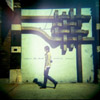 The world of "electronica" arguably moves quicker than any other genre of modern music. Subgenres like trip-hop, drum n bass, grime, dubstep, IDM, are just as quickly dismissed as they are embraced. When an album like this comes along (which avoids all subgenre pigeonholing) it can easily be passed over by critical purists, but, in the long run, this characteristic can make it have an exponentially longer shelf life. Fourteen months after its release I am still—actually even more—addicted to it. This is one of my favorite albums of 2009 and possibly one of my favorite electronic albums of the last decade.
The world of "electronica" arguably moves quicker than any other genre of modern music. Subgenres like trip-hop, drum n bass, grime, dubstep, IDM, are just as quickly dismissed as they are embraced. When an album like this comes along (which avoids all subgenre pigeonholing) it can easily be passed over by critical purists, but, in the long run, this characteristic can make it have an exponentially longer shelf life. Fourteen months after its release I am still—actually even more—addicted to it. This is one of my favorite albums of 2009 and possibly one of my favorite electronic albums of the last decade.
Immolate Yourself bears a very strange title given the turn of events around its release. One way to define "to immolate" is "to sacrifice," and one week before the album's street date, Charlie Cooper, 1/2 of the group, took his own life. I wouldn't go as far as to say we were friends but I had met him and Josh a few times, interviewed them once for The Eye, and had some occasional emails with them from time to time. Charlie was indeed a sweetheart and will sorely be missed.
While the duo's work relies heavily on machinery and technology, this album aches with humanity. Following some of the blueprints laid by Kraftwerk, the almost clinical quantization of beats and sequenced melodies is equally as important as the lush soundscapes, anthemic motifs, and subtle—yet never downplayed nor discounted—singing. When an electronic outfit debuts with an instrumental sound and progresses into a project with vocals, there's a tendency to ruin records by making them too voice heavy, with mediocre vocal performances front and center (see UNKLE and Dntel). Thankfully, the vocals on Immolate Yourself only appear on songs where they belong, are never overbearing, nor do they provide an excuse for lackluster instrumentation on the songs they do appear. There's almost a scent of the more experimental pop stage of OMD in the air: recall the 1981 hit single "Joan of Arc" - a pop tune absent of a vocal refrain, using a melody line in its place.
I admire that the duo has spent a noticeably long time on the quality of this record rather than flood the market with quantity. It's fairly clear that lots of time was dedicated to both the composition and recording of the album. Their songwriting on this album is intricate, managing to accomplish both unpredictable originality and catchiness. I often find myself stuck with the opener "The Birds" and the closing title track, the second single, stuck in my head. A song like "Your Mouth" will cause wet dreams for studio heads due to its classy blend of well-treated sounds and instrumentation, including the sound of what could easily be the band physically grabbing an actual reel-to-reel tape of lush strings with their hand, at very carefully planned moments, to make that almost unrepeatable instantaneous sound of cassettes being munched. While this could very well be an effect of some piece of software, to me the point seems clear: while machines are responsible for a lot of the sounds here, man is still in control.
Immolate Yourself is the perfect length at 45 minutes, consisting of only 10 songs and zero filler: from start to finish, there is not a weak moment to be found. The closest the duo approaches is the instrumental "Your Every Idol," which is based on a drum loop that creeps out of phase predominantly in one channel and eventually catches up with itself, morphs into more of a metallic machine sound, and evolves to form the backbone of "You Are the Worst Thing In the World," the first single release from the album, and a song delicious enough to make any Camouflage fan very, very happy.
The departure of any member of a group will undoubtedly change the sound, but the sound of Telefon Tel Aviv has changed over the course of their output over the last decade, and would have evolved again. This is such a complex record that it's exceptionally sad Charlie left us before he could see the impact his devotion to this recording had upon its release and may continue to have over the years. This is one hell of a record and to be able to listen to it and grow more fond of it long after its release is a testament to its excellence.
samples:
Read More
- Administrator
- Albums and Singles
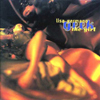
Lisa Germano’s first proper album for 4AD is a rare thing: a transitional album that stands as a career highlight. Somewhere midway between the jangling folk-rock of Happiness and the woozy, melancholy piano ballads of her more current work lies this uncomfortably autobiographical and disturbing examination of disillusionment and the dark side of sexuality. While she certainly continued to write great songs after this album, she would never again be edgy, sharp-focused, or harrowing (or experimental). Of course, that is no surprise, as this sort of wrenching catharsis can only come from a dark psychological place that no one could possibly want to regularly inhabit.
 
I bought this on a whim at a used record store in 1994, blissfully unaware that it would be the apogee of both Germano’s career aspirations and my brief dalliance with an "if it’s on 4AD, it must be good" policy towards album-buying.Picked up by 4AD after a very short-lived and disillusioning stint on Capitol (complete with a very embarrassing music video), Lisa seemed to have found the perfect home with Ivo Watts-Russell.In fact, he was so taken with her that he even remixed and transformed her major label album (Happiness) into something darker and more compelling.More importantly, Germano’s sound (perfected here) was simultaneously the archetypal 4AD sound and a dark twist on it: Geek the Girl is what happens when the doe-eyed romanticism and shimmer of bands like Cocteau Twins and This Mortal Coil smacks headlong into the ugly realities of love’s bad side.Appropriately, the album drew a lot of well-deserved critical acclaim upon its release.
The liner notes explain that Geek the Girl is the story of "a girl who is confused about how to be sexual and cool in the world but finds out she isn’t cool and gets constantly taken advantage of" yet "…still tries to believe in something beautiful."That tug-of-war between hopefulness and painfully dwelling on past humiliations is what keeps the album both emotionally affecting and listenable.Things get pretty dark at times, like the very unsettling "…A Psychopath" (which features shrieking from a real 911 call), but there are many more times where Lisa unexpectedly launches into absolutely gorgeous melodies (like the chorus of the otherwise bilious "Of Love and Colors").The transition from such bitterness to tender warmth is both heavenly and heartbreaking, as Lisa seems defiantly unwilling to let the darkness drag her to the bottom but not quite wary enough to avoid future disasters.
Notably, Geek the Girl is a great album rather than a collection of great songs.In fact, there are only a few stand-alone gems, like the aforementioned "Of Love and Colors," "Trouble," and "Cry Wolf" (though lyrics like "she’ll change her mind in that back seat or that dirty room, they’ll say she got just what she wanted" make for some very uneasy listening).Nevertheless, the album is so creative, lush, varied, and brilliantly sequenced that it holds together beautifully as an immersive whole.Also, even the less-than-great songs tend to contain at least one truly inspired idea.Lisa and collaborator Malcolm Burn employ a wide sonic palette and display a surprising amount of playfulness throughout the album.Despite Germano's high profile background as John Mellencamp's violinist, she and Burn are quite sparing with strings here (though they are used to great effect when they do appear, such as in the sneeringly caustic "Cancer of Everything").Instead, the duo step out of Lisa's comfort zone to depend on a mixture of guitars, accordions, pianos, harps, dulcimers, and a wide array of studio effects.Geek the Girl seldom uses instrumentation in conventional rock ways, as there are a number of odd instrumental passages scattered about (like the faux-Middle Eastern surf interlude that begins the album) and sounds are often tweaked to shiver, glisten, or reverberate in striking ways.
While there are certainly a few awkward missteps into preciousness, such as the chorus of "oh oh, I’m not too cool" in the title track, this otherwise solid album is probably Germano’s creative zenith.There are a number of great ideas here (like the sultry, deadpan verses of that same song or the odd ethnic flourishes strewn all over the album) that were well-worth exploring further, but that never happened.Frustratingly, Germano responded to Ivo-Watts urge not to repeat herself by following Geek with the uneven and sometimes awful rock of Excerpts From A Love Circus.Also, while her post-Circus songwriting continued to get better and better, all of Germano’s later albums fall within much narrower stylistic confines (and her career would be dogged by frequent label changes, poor album sales, personal problems, and lengthy hiatuses).I still love her intimate, husky voice and sad, vulnerable songs, but I can’t help but miss the days when the accompanying music was still unpredictable.
Samples:
 
Read More
- Administrator
- Albums and Singles
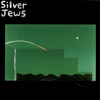
For his first album without founding band mate Stephen Malkmus, David Berman opted to abandon the band’s signature drawling slacker-rock for something totally different: stripped-down and drawling slacker-country. Given that the best things about the Jews have always been Berman’s singularly excellent lyrics and endearingly deadpan delivery, increased intimacy could not be anything other than a great idea (especially since these are some of Silver Jews' most dark and personal songs). The Natural Bridge is David Berman's Nebraska.
 
Like many people, I was first introduced to Silver Jews in a very misleading way: I was working at a college radio station in 1996 and one of my fellow DJs excitedly told me that we had just received a great new album by "a Pavement side-project."I was never a huge fan (though Pavement certainly has a ramshackle charm), so I was pleasantly surprised that The Natural Bridge did not sound anything like them and actually did not feature anyone from that band at all.Still, I wasn’t especially impressed with the first song I heard ("Pet Politics") until I realized that lines from it still kept popping into my head a week later.I gave it another chance and it has been a constant fixture in my life ever since.
As a lyricist, David Berman is in a class by himself, by turns evocative, profound, moving, and witty.Even his weakest material tends to be peppered with mysterious allusions, inspired imagery, and clever turns of phrase, but The Natural Bridge is probably his most powerful and consistent single work.Here, Berman’s considerable talent at wielding the English language is met halfway by a distinctly non-cerebral sense of palpable heartbreak and longing.I have no idea what the personal circumstances surrounding this album were, but it seems very unambiguously like a wounded man trying to forge meaningful art from the broken shards of a love affair gone devastatingly wrong.Still, while this is ostensibly a "break-up album," the songs here don’t sound like Berman is self-indulgently wallowing in his pain at all. Instead, the album feels like a long, laid-back conversation with an old friend who has been to hell and back, but has nothing but insightful, wise, and wryly amusing things to say about it all ("well I wish they didn’t set mirrors behind the bar, cuz I can’t stand to look at my face when I don’t know where you are").
The entire album is consistently compelling and littered with wonderful moments (aside from one throw-away instrumental), but I vastly prefer its first half.The opening track ("How to Rent a Room") has been a favorite of mine and it is very hard to write about it without resorting to breathlessly quoting all of its best lines.It’s the most explicitly relationship-themed song on the album and achieves the perfect mixture of heartbreak, abstraction, and gorgeously haunting imagery, telling its story with a flood of fleeting impressions ("your laughter made me nervous, it made your body shake too hard"). The following two songs ("Pet Politics" and "Black and Brown Blues") are equally stunning, but much stranger lyrically.In fact, "Pet Politics" never ceases to fascinate me, as it is the most bluntly powerful song on the album despite some singularly inscrutable and disjointed content.David sounds almost like a Doomsday prophet of Old Testament power at times, somehow imbuing lines like "When the rain hits you, it hits you slow" with startling depth and finality.
Berman’s backing band this time around consists of fellow Virginians New Radiant Storm King and Drag City producer Rian Murphy and they make an odd, but perfect foil.The music is bare-bones simple in a way that almost borders on naïve for some tracks, just the most straightforward chord progressions possible being strummed in the most straightforward way with almost no frills.Despite that, the band manages to turn the mundane raw material into something spacious, understated and unobtrusive yet still agreeably loose-limbed and swinging.It’s like a very unprepossessing frame that turns out to be the only one that can truly bring out the picture’s best qualities: Berman has never sounded this relaxed or focused, before or since.His more indie rock-themed albums certainly offer more in the way of immediate hooks, but the rustic, lived-in feel of The Natural Bridge has far more staying power.Aside from the obvious aesthetic dissonance of cloaking great songs in mediocre, of-the-moment rock, David has a tendency to get a bit hammy when things get a bit too rocking.
While this album thankfully is not dogged by an over-the-top delivery, it is not immune to Berman's occasional propensity for head-scratching non-sequiturs that wildly miss the mark (particularly its second half).Whether this is charming or insufferably pretentious is in the ear of the beholder, but I personally find his go-for-broke willingness to toss out horrible lines like "is it true your analyst was a place-kicker for the Falcons?" or "a new girl in Tahoe has swallowed Sinatra’s cum" endearing.Also, some of his bizarre one-liners can sound incredibly profound despite (or perhaps, because of) their seeming disconnection from the words around them (like "when I go downtown, I always wear a corduroy suit, cuz its made of a hundred gutters that the rain run right through").David Berman, more than just about anyone, understands that beauty and emotional resonance sometimes need to be approached in very oblique and unexpected ways.In fact, one of the best songs on the album, "The Frontier Index," is composed entirely of disconnected couplets ranging from bad jokes to bumper sticker slogans.The song ends, however, with Berman's earnest pronouncement that that he just wants to say something true.Whether he feels he succeeded is something that only he knows (probably not, since he attempted suicide by crack a few years later), but The Natural Bridge is moving and mysterious enough to at least convincingly feel like he did.
Samples:
 
Read More
- John Kealy
- Albums and Singles
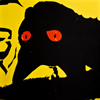 Purported to be Ireland’s first noise 12" (send any refutations on a postcard to anyone but me), this EP is at least going to be one of the best even if it is not the only one. The duo of Gavin Prior and Andrew Fogarty conjure up four stellar pieces, each one covering a different aspect of noise as an expansive genre without resorting to just pushing up all the dials and leaving the microphones recording.
Purported to be Ireland’s first noise 12" (send any refutations on a postcard to anyone but me), this EP is at least going to be one of the best even if it is not the only one. The duo of Gavin Prior and Andrew Fogarty conjure up four stellar pieces, each one covering a different aspect of noise as an expansive genre without resorting to just pushing up all the dials and leaving the microphones recording.
 
Although I am not sure which side is A or B (even the matrix codes give no clue), the four pieces that make up The Night Vision all sound superb. (What I think is) "Salt Mists" begins quietly, some discordant sounds like something broken being bowed eventually building up into a harsher mass of sound. Spooky, whistle-like loops emerge in the background before the piece dips into a lower register which gives the impression of a hellish ferry into hell sounding its infernal foghorn.
Assuming the other side is the B side, "Taking Hold" is based around a beautiful organ while rusty detritus scraps and squeaks all over it. Then on "Burned Clean," Fogarty (one half of Toymonger) brings some of his textural experience from one of his other musical ventures, Boys of Summer, to help create a dense cloud of fuggy noise. This fantastic piece provides an exhilarating finish to a top notch EP.
 
Read More
- Administrator
- Albums and Singles
2. Linden Avenue Stomp (J. Rose, G. Jones)
3. The Longer You Wait (M. Haggard)
D. Charles Speer & the Helix came together through the common hearing of a certain inflection. Born from the heart and mind of David Charles Shuford, strains of glassine cruelty, broken glasses and ruptured knees mixed with memories of Chet Atkins lullabies and ZZ Top vids to generate a songcraft steeped in tradition but themed for the burned. An early century compulsion to stalk the David Freeman mail order record lists led to a group of home recordings in which D. Charles Speer emerged. A tribute to the ever loving and giving Louise Speer, here the shadows of history are both enjoyed for their shade and cursed for their reach. A band coalesced to perform the songs live, first manned by Robert Gregory on drums and then populated by more old friends. Setting stages alight since 2006, D. Charles Speer & the Helix are a force to be reckoned with where ever the nightlife reigns supreme. All having followed a coursing path chasing quicksilver forms, each member of the Helix feels the weight of the sky well. Years of soaking in the spirit of improvisation have come to rest in a deep grooved vessel bourne by 12 legs. A kind of reflecting chamber wherein the sonic heritage of Georgia, California, Texas, Louisiana, Tennessee and Piraeus are blended into a fine barrel for the discerning boozer. Two albums were tracked at Jason Meagher's nascent Black Dirt Studios: After Hours and the most recent LP Distillation, released on Three Lobed Recordings in November 2009. Since this alchemical roots operation occurs in New York, the listener realizes quickly the band's edge remains sharp: the resonating geographic ghosts feel far from distant - instead their presence is made palpable. San Francisco and Bakersfield are collocated and felt close. One can imagine a scene wherein Moby Grape gets smashed against the windshield, but the Wipers make sure that Gary Stewart can find his way to San-Hozay; of course this is a musical sequence that should be seen to be experienced fully. The Speer gang feel right at home on the road and love to get heels kicking in clubs, house parties, bars, basements and VFW halls across the land
Read More
- Administrator
- Albums and Singles
 This Chapel Hill five piece is at least superficially crafting big, noisy rock songs, with more than a passing nod to classic grunge, but with an approach that is closer in spirit to the free jazz configurations of Ornette Coleman than any traditional metal group. With hard panned dual drums, and bass and guitar segregated to left and right channels, respectively, the result is a highly structured racket that runs the gamut of rapid fire hardcore to slow, lugubrious sludge.
This Chapel Hill five piece is at least superficially crafting big, noisy rock songs, with more than a passing nod to classic grunge, but with an approach that is closer in spirit to the free jazz configurations of Ornette Coleman than any traditional metal group. With hard panned dual drums, and bass and guitar segregated to left and right channels, respectively, the result is a highly structured racket that runs the gamut of rapid fire hardcore to slow, lugubrious sludge.
 
In many ways this is a "supergroup" of the Chapel Hill avant rock scene, with the band’s five members being involved in a multitude of other projects (Horseback, The Hem of His Garment, Mount Moriah, and a ton of others), but the guys gel together as a single unit here.The opener "You Want to Live, But We Will Die Free" initially starts with noisy guitar and bass drone, as drummers Jenks Miller (right channel) and Dave Cantwell (left channel) duel it out before all comes together in a surge of noise and drum freakouts, the intensity ebbing and flowing for the first third of the piece.Afterward, it launches into an adrenaline soaked propulsive take on krautrock, with gasped vocals bringing a bit of hardcore punk to the proceedings.The track eventually slows down and frays apart into pulses of noise and big, pummeling drums.
The "short" track (the only one less than ten minutes long), "For the Glory of Man" begins tentatively with amp hum and a bit of rhythmic interplay before quickly getting up to speed, a mostly straight-forward bit of bass driven, grunge tinted rock.Unsurprisingly a dense stormcloud of sound, it lurches towards the rapid pace of hardcore in its closing moments."And Remember the Good Times" is far less content to maintain a consistent style throughout its 15-plus minute duration:initially opening with a hard rock sound and vocals that wouldn’t be out of place coming from a dive bar somewhere, the track soon goes into a bit of funk, dissonant noise, and heavy metal pounding before finally settling in as painfully slow sludge rock that gets more and more drawn out as the track goes on.
The rhythmic conflict that opens "Workin' for Nothin'" initially encroaches on "numetal" territory without ever becoming as awful as that genre is before settling in on a more psychedelic rock sound.Between that and the mantra-like vocals, it starts to take on the spacey repetition of stuff from the Freek label from the 1990s, which eventually opens up and allows guitar squeal and noisier bits to take the lead.Closer "Using Not the Tools of our Trade" is propelled by monolithic bass leads, while the guitar is abused for textural purposes, all the while dual mechanized drumming pounds away.Eventually the noise and distortion is stripped away, going to a cyclic structure that’s rather conventional before being stretched out again to heavy and painfully slow noise that, in its dying moments, slams into grindcore blast beats and jazzy bass, ending the disc with an adrenaline rush.
Unabashedly happy to "rock", In the Year of the Pig does so with a more diverse approach than most, mixing the fluid structures of free jazz with hardcore, rock, and metal flourishes in a unique way, never feeling disparate or an exercise in forced genre hopping.Instead, it is complex, but simultaneously raw, coating the complexity of jazz in the raw power and sweat of pounding rock, to wonderful ends.
samples:
 
Read More
- Administrator
- Albums and Singles
 Ashley Hutchings and John Kirkpatrick caused a rumpus of sorts with Morris On, an audacious electric folk treatment of Morris dancing tunes. Next they created this treasure, a project spanning about seven centuries of dance music in England. They broadened the folk-rock palate by focusing more on traditional instruments such as crumhorn, spinet and viol, and linked musical pieces with historically relevant spoken word passages read by actors such as Sarah Badel, Michael Horden and Ian Ogilvy.
Ashley Hutchings and John Kirkpatrick caused a rumpus of sorts with Morris On, an audacious electric folk treatment of Morris dancing tunes. Next they created this treasure, a project spanning about seven centuries of dance music in England. They broadened the folk-rock palate by focusing more on traditional instruments such as crumhorn, spinet and viol, and linked musical pieces with historically relevant spoken word passages read by actors such as Sarah Badel, Michael Horden and Ian Ogilvy.
 
If memory serves, the popular musical landscape of 1972 England was a peculiarly charming mix of post-psychedelic pop, easy listening, progressive rock, white-boy blues, hippy remnants and fledgling-glam rock. Enter Ashley Hutchings to do the most unfashionable thing imaginable: an aggressive but charming folk-rock album of Morris Dancing tunes. That album, Morris On, had a rip-up-and-reassemble aesthetic vision of Englishness which (with hindsight) was as ludicrous and revolutionary as UK punk rock. At any rate, the natives were revolting; if only temporarily and not quite into style. Several tracks, such as "Staines Morris" (featuring Shirley Collins) have a hard edge and no-nonsense feel which lets them shine as music, away from the dance. Equally, "Cookoo's Nest" is a bawdy ode to the vagina, if not quite a monologue. Both pieces show the razor sharp crunch of Richard Thompson's guitar and the matching economy of Dave Mattacks's drums.
The Compleat Dancing Master was released the following year and is a more varied affair, with a wider musical scope and esteemed actors reading associated texts from such writers as Chaucer, Dickens, Hogarth and Shakespeare. Taking its title from books of dances collected and compiled by John Playford, the atmospheres on the album are sometimes akin to Peter Greenaway's The Draughtsman's Contract although not as up-itself or as nakedly pretentious. Hutchings, a cofounder of Fairport Convention, Steeleye Span and the Albion Band, was originally seduced by the Morris after hearing William Kimber the concertina player of the Headington Quarry Morris. For The Compleat Dancing Master he and Kirkpatrick reflect such inspiration by augmenting the hard folk-rock sound even further with the help of country dance playing experts such as Bert Cleaver, Dave Kettlewell, and Alan Ward. Indeed, some tracks feature no discernable rock influence at all. I like the way that the spoken pieces set up the music which follows. Michael Horden's reading (as Dickens from Sketches by Boz) leads into two polkas "Bonny Breastknot/Double Lead Through". Bernard Hepton's spittle-flinging rant against dance (as the Puritan William Prynne from Histriomastrix) precedes the 17th century tune "Nonesuch/Cuckold's All Awry". Gary Watson (as Geoffrey Chaucer reading from The Romaunt of the Rose) speaks in an old tongue as appealing as the Stanley Unwin brand of gobbledygook most often heard on Ogdens' Nut Gone Flake.
According to Lois Ellfeldt, Morris dance probably has a Moorish origin and is similar to some of the Basque dances; dancers take turns before returning to their position in either a square, circle, or longways set. Exact dates or origin are open to dispute and there are also conflicting reports (at least from the UK) as to the health or otherwise of the Morris. Some suggest that young people aren't taking up the practice and thus obsolescence beckons. Paul Reece, chairman of the Advisory Council of the Morris Ring, has said: "There is still time for new blood to get ready for the Spring fertility offensive". Certainly the pastime grew in the 1970s and if the participation of women is encouraged perhaps extinction can be avoided. For me, as long as the Abbot's Bromley Horn dance persists, all will be well, and I am confident it will be. In what other forms the Morris dance may survive is open to question. In a relatively new twist, groups distinct from the traditional Thomas Hardyesque figures have emerged, gathering in rural solitude to bring their own hue to the Morris. With blackened faces and clothing more akin to Goths at a Cure concert, these groups are accentuating the Pagan fertility aspects (not just holding sticks but making quasi-lewd motions with them) and reflecting a post-industrial urban sensibility. Rather disturbingly they are ditching the old tunes and writing their own minor key compositions. Reports suggest that these Pagans have day jobs in offices, in the probation service and pharmacies and that they heartily reject the Christian, Imperialist, xenophobic notions of England in favor of a more ancient, shamanistic version. It may be cynical to wonder if they aren't actually inspired by Terry Pratchett's Discworld. No word yet if their Christmas trees are black.
samples:
Read More
- Matthew Spencer
- Albums and Singles
 This split single presents two very different takes on art damaged rhythm music. While both cuts are rooted in popular dance idioms (Dub, Afro-Beat, Drum & Bass), Urick and Willet seem more interested in demolishing genre conventions than cultivating them. They share a penchant for wobbly, amorphous productions that incite more head-scratching than ass-shaking.
This split single presents two very different takes on art damaged rhythm music. While both cuts are rooted in popular dance idioms (Dub, Afro-Beat, Drum & Bass), Urick and Willet seem more interested in demolishing genre conventions than cultivating them. They share a penchant for wobbly, amorphous productions that incite more head-scratching than ass-shaking.
 
If names were all that counted, "All Night Moisturizer" would stand with my favorite tracks of last year.At once banal and suggestive, the title would be perfect for some slick piece of electro-funk. As it is, Willet’s track is more belligerent than seductive. He piles up skittering break-beats over piercing, needle-like bursts of sound. Superficially, the rhythm programming recalls Squarepusher or Aphex Twin’s more aggressive moments, but Willet never assembles his electronics into anything as clinically precise.
The flip side, "Si Na Min," emits a more laid-back vibe, but in a way that emphasizes its rhythm instead of blunting it. Urick lays down a thick cloud of audio haze where muffled voices shout and grunt in some kind slow-motion abandon. The track is in fact a remix of a song by the West African group El Rego et Ses Commandos, from the excellent compilation African Scream Club. Eventually, a portion of the original groove emerges, built from interlocking horn and drum samples that undulate beneath a heavy bed of metallic reverb.
Both Urick and Willet make fresh noise from established genres, but the results are more tantalizing than satisfying. Both cuts work towards a kind of rhythmic crescendo, but within the short format of the single, there isn’t enough time for them to build tension. The two seem to be reaching for some dissociative groove where the mind moves as much as the body. For that, they need a larger canvas.
Read More
- Administrator
- Albums and Singles
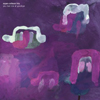 Pianist Espen Eriksen’s debut album with his trio stands out but not in a good way. The insipid compositions are more at home in the background of an expensive restaurant or bar rather than on my stereo. Monotonous and emotionally detached, this collection of instrumental jazz fades into the background far too easily. The term "audio wallpaper" gets thrown about far too freely but You Had Me At Goodbye certainly deserves this classification.
Pianist Espen Eriksen’s debut album with his trio stands out but not in a good way. The insipid compositions are more at home in the background of an expensive restaurant or bar rather than on my stereo. Monotonous and emotionally detached, this collection of instrumental jazz fades into the background far too easily. The term "audio wallpaper" gets thrown about far too freely but You Had Me At Goodbye certainly deserves this classification.
 
Rune Grammofon have always been at the forefront of Norwegian jazz; bands like Shining, Supersilent and Elephant9 all pushing the boundaries and expectations of jazz further and further afield. Therefore, hearing the piano bar style jazz of the Espen Eriksen Trio was a shock to me. Unlike the shock of the new that accompanied my first time hearing Supersilent, this is a shock of the banal. The main problem with You Had Me At Goodbye is not that the music is not pushing any boundaries but that it fails to connect with me on any level.
Credit where it is due, the trio all play perfectly well. The clinical execution of their music is textbook technical proficiency but ultimately sterile. From the opening notes of "Anthem," I feared that there had been a pressing error and some muzak had been mistakenly labeled as the latest Rune Grammofon release. However, the hotel lobby piano melodies that Eriksen employs are meant to be there. The accompanying drums and bass are equally pretty but shallow, the music ending up beige in comparison to the rich hues of traditional and contemporary jazz. "In the Woods" brings to mind the works of Ludovico Einaudi but feels bland in comparison.
There are some moments where the trio do get some life into them; "Masaka Tsara" sees them let loose a little but they never go anywhere thrilling. "On the Jar" has a nice beat to it and it comes the closest out of all the pieces here to being warm and inviting. Eriksen’s piano motifs are lifted on some very nice bass playing, all the while Andreas Bye creates a gentle but engaging patter on the drums. However, the piece does slip into cliché too often and I wonder if "On the Jar" would stand out as one of the better pieces on a stronger album.
I think it says it all when my mother, whose usual tastes run to Michael Bublé and his ilk, commented at how much she liked this album. You Had Me At Goodbye is inoffensive and unexciting. In a restaurant, I would barely notice its presence as it formed part of the background noise. Sitting here and giving it all my attention, I cannot help but feel that this album has arrived through the wrong letterbox.
samples:
 
Read More
- Administrator
- Albums and Singles
 This album has been sitting on a shelf for 15 years but it sounds as vital today as it would have had it seen the light of day back then. Featuring the kind of rhythm section that can be charted on the Richter scale and pose the danger of serious structural damage, this is one of the best "lost" albums to surface in recent years.
This album has been sitting on a shelf for 15 years but it sounds as vital today as it would have had it seen the light of day back then. Featuring the kind of rhythm section that can be charted on the Richter scale and pose the danger of serious structural damage, this is one of the best "lost" albums to surface in recent years.
 
Fuckface’s massive sound was down to their penchant for drummers. A quick glance at the list of players on this album makes them look like Spinal Tap but all these percussionists were playing at the same time. The primordial power of the beats was reinforced by the group’s refusal to use snare drums or cymbals; the only concession to something remotely like cymbals was Karl Paloucek’s use of junk metal which was always more indebted to Einstürzende Neubauten than to any drummer with a standard kit. "L.A. Song" barrels out of the speakers and steamrolls over the listener, the thumping percussion driving some glorious buzzsaw guitars and Dave Szolwinski’s vocals.
The group continue their assault across the album with tracks like "Thorn" and "Snitch" pummeling us senseless. "White of the Eye" is a swampy mess of growling guitar work which implodes into a fantastic extended quote of The Stooges’ "T.V. Eye;" all the menace of The Stooges amplified and exaggerated through Fuckface’s lens. "Black House" sees Fuckface slow down considerably as they generate a massive, defiant noise: "It’s my house and you can’t make me go!"
The album finishes with a recording of a riot that occurred during a Black Sabbath show in Milwaukee in 1980. The disturbing shift from audible annoyance and discontent to outright violence is captured with impressive quality. I know this has been long available as a novelty bootleg but it is unclear whether any member of the band played a part in recording it or whether they were there (Fuckface were based in Milwaukee, after all). In any case, it acts as a crushing closer to the album; the weight of mob violence going hand in hand with Fuckface’s pounding music.
As well as the original album, this CD also contains a bunch of bonus tracks including both sides of their Thorn 7" (although no other previously released material is included). The bonus tracks maintain the standard set by the main album and apart from the case of "Buffalo Bill" which surpasses everything else on this album. A tribute to the serial killer of the same name in Silence of the Lambs, co-opts one the film's best lines as the chorus: "It puts the lotion on its body, it will eat its food or it will get the hose!"
It is a shame it has taken it so long to make it out of storage and into my ears.
samples:
 
Read More